Green Building Materials: Aim, Components, Features, and List
Green building materials are made from renewable resources and environmentally friendly. Green buildings are environmentally responsible, starting with its design, planning, maintenance, construction, renovation, the materials used, and demolition.
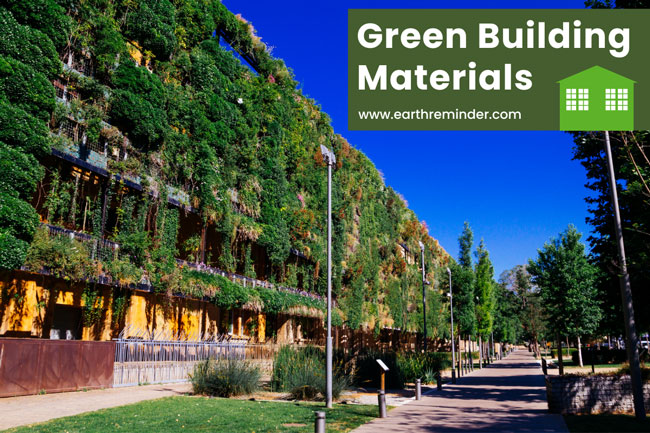
Table of Contents
What Is Green Building?
The concept of green building involves designing, constructing, and operating buildings in an environmentally friendly manner. From its construction to its operation, it includes everything. Green building components can benefit the environment as well as the people who live there.
The construction of green buildings requires everyone’s cooperation involved in the project, whether you are a contractor, architect, or engineer. There are various Eco-friendly materials alternatives for traditional building materials available these days. You can choose these building materials for environmentally responsible constructions.
What Is the Aim of Green Building?
The continuous development has led to various harmful environmental effects such as pollution, emission of greenhouse gases, global warming, etc. This is an alarming situation in which we must find a way to escape the hazardous situation we have created.
Green buildings aim to create a sustainable, environmentally-friendly building that provides residents with a comfortable, healthy indoor and outdoor environment.
Green building material is a very helpful practice that can be followed to create an Eco-friendly atmosphere across the globe. But unfortunately, traditional material such as concrete used for building construction has harmful effects on the environment and human health.
This is why Eco-friendly building materials are promoted daily for various benefits such as environmental improvement, cost-effectiveness, social benefits, etc.
7 Components of Green Building
When we talk about the components or elements of a green building, it has seven main components that play a major role in its construction. These components help in increasing the sustainability of green buildings. The components of green buildings are;
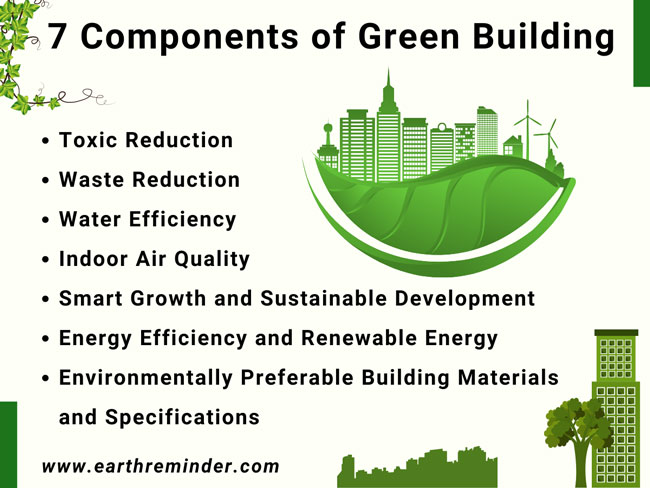
Energy Efficiency and Renewable Energy
One of the main goals of green building is to reduce energy consumption and greenhouse gas emissions from buildings. Real estate accounts for 40% of emissions. In a year, 27% of those emissions come from building operations, while 13% come from materials used in infrastructure and construction.
The term energy efficiency refers to using less energy to provide services, comfort, and functionality that are the same or better than before. A building can be made more energy efficient through:
- By using natural ventilation.
- By using a passive solar design.
- Improvement of its structure (inside and out).
- By optimizing building systems and controls.
- And by installing high-efficiency appliances and lighting.
The term renewable energy refers to energy sources that are continually replenished by natural processes, such as energy from the sun, wind, water, geothermal, and biomass sources. In order to accomplish this, renewable energy systems can be incorporated into the building design, such as photovoltaic panels, solar water heaters, solar thermal systems, and wind turbines.
Essentially, this component aims to make homes, buildings, and a variety of appliances and building components more energy-efficient. Also, wind turbines and solar panels are encouraged.
Water Efficiency
Green building also aims to reduce water use and pollution from buildings, which account for about 20% of global water consumption and are linked to water scarcity. Water efficiency means reducing water consumption while providing the same or better services, comfort, and functionality. This can be achieved by:
- By harvesting rainwater and recycling greywater.
- By reducing stormwater runoff as well as wastewater discharges.
- Recycle water for agricultural purposes and flushing in washrooms.
- Making irrigation and gardening practices as water-efficient as possible.
- Installing Water-efficient accessories like low-flow shower heads, self-closing taps, etc.
The purpose of this component is to promote and enhance the market for water-efficient products and services. A performance criterion for water-efficient products and services is also developed.
Environmentally Preferable Building Materials and Specifications
A third component of green building is to minimize the environmental impact of building products and materials throughout their life cycle.
A sustainable building material is one that is environmentally friendly. Natural and renewable resources are used to make these materials. Moreover, they are localized to minimize transport costs. It is not only Eco-friendly, but also energy-efficient, and durable, and reduces landfill waste.
Building materials and specifications that are environmentally friendly are those with a low carbon footprint, toxicity, waste generation, and resource depletion.
Utilizing recycled, reclaimed, renewable, biodegradable, and locally sourced materials can help achieve this goal. Also, it can help avoid harmful substances, such as volatile organic compounds (VOCs), formaldehyde, asbestos, and lead.
Also, assuring that materials are certified by third parties such as Energy Star, Green Seal, and the Forest Stewardship Council; and using life cycle analysis tools to compare the environmental impact of different options.
Waste Reduction
A fourth component of green building is to minimize waste generated during the construction, operation, and demolition of buildings. A third of the world’s waste is generated by construction. This accounts for a significant portion of our overall waste, which is disposed of in landfills, incinerated, and contaminated. Reducing waste means minimizing its quantity and improving its quality. This can be achieved by applying:
- Using reduce, reuse, and recycle principles.
- Promoting circular economy models as well.
- Reducing waste sent to landfills and incinerators.
- Building durable, adaptable products that can be disassembled.
- Planning and implementing waste management practices.
To meet our construction industry’s material needs, this component recycles coal combustion products, foundry sand, and construction debris.
Toxic Reduction
A fifth component of green building is to protect building occupants and workers from toxic substances that can harm them.
The term “toxic reduction” refers to reducing or eliminating hazardous chemicals from building materials, products, and processes. This can be achieved by the following:
- Taking precautions.
- Adopting safer alternatives.
- Assuring adequate ventilation.
- Performing indoor air quality tests.
- Utilizing green chemistry principles.
- Taking measures to prevent pollution.
- Educating people about possible risks as well.
- Maintaining compliance with relevant regulations and standards.
The overall goal of this component is to reduce toxic substances in building materials.
Indoor Air Quality
A sixth component of green building is to make buildings healthier, more comfortable, and more productive by improving the quality of indoor air. A quality indoor environment includes maintaining acceptable levels of temperature, humidity, ventilation, lighting, and noise. Also, inspecting for contaminants. This can be achieved by:
- Reducing the level of noise.
- Making sure residents are satisfied.
- Using natural daylight in the design.
- Keeping a comfortable temperature.
- Keeping an eye on carbon dioxide levels.
- Keeping moisture sources under control.
- Pollution-filtering systems for outdoor air.
- Maintaining an adequate supply of fresh air.
- Keeping indoor air free of indoor air pollutants like VOCs, mold, and dust mites.
Overall enhancing indoor air quality is the focus of this component.
Smart Growth and Sustainable Development
A seventh and final component of green building is encouraging smart growth and sustainable community development. Smart growth aims to foster compact, mixed-use, walk-able, and accessible communities while preserving land, protecting natural resources, and enhancing social equity. In sustainable development, present needs are met without compromising the needs of future generations. This can be achieved by:
- Promoting biodiversity.
- Making a place feel like home.
- Enhancing public transportation.
- Making progress and measuring it.
- Encouraging development in infill areas.
- Keeping open spaces in good condition.
- Providing support to local businesses and engaging stakeholders.
- Planning for land use in accordance with green building principles.
Overall, this component promotes sustainable development practices to reduce environmental impact.
Features of Green Building
An Eco-friendly building focuses on energy efficiency, environmental responsibility, and health and well-being. Here are some key features of green buildings:
- The design of green buildings is aimed at reducing energy consumption through the use of energy-efficient lighting, heating, cooling, and ventilation systems.
- Green buildings often use renewable energy sources for generating electricity and reducing reliance on non-renewable resources.
- The design of green buildings focuses on conserving water by utilizing low-flow fixtures, rainwater harvesting systems, and water-efficient gardening techniques.
- Green buildings utilize sustainable materials, such as natural clay, bamboo, and non-VOC paints, in order to minimize their environmental impact.
- A green building uses ventilation systems, low-emission materials, and avoids toxic chemicals to promote healthy indoor air quality.
- Green building design uses sustainable site design practices, such as permeable paving, green roofs, and rain gardens, to minimize their environmental impact.
- A green building prioritizes waste reduction by implementing programs for recycling and composting, as well as programs to manage construction waste.
- In order to minimize operating costs and optimize energy use, green buildings often integrate smart building technology, such as building automation systems and occupancy sensors.
- A green building may employ passive design strategies in order to reduce overall consumption of energy and improve occupant comfort, such as orienting the building to maximize natural light and ventilation.
- A building’s sustainability performance can be evaluated through third-party programs such as LEED (Leadership in Energy and Environmental Design).
Eco Friendly Green Building Materials List for Construction
The use of concrete in construction no doubt builds strong huge buildings. Still, if we think from an environmental point of view, its effect is quite hazardous to the environment. Commercial concrete emits a huge amount of carbon dioxide into the atmosphere during production, leading to climate change.
We all need to find a way out of this situation. You can use Eco-friendly green building materials instead of concrete to tackle this situation. The primary purpose of using these building materials is to build energy-efficient constructions. Before you choose any material for construction, you must know the properties of these materials.
The following list of materials will help you choose the best environmentally friendly materials for construction:
Bamboo
Bamboo is an environmentally friendly building material. It is a durable material to use for construction, giving the structure the most elegant look. It’s lightweight and easy to transport. As long as it’s properly treated, it’s durable, resistant to insects, fires, and water.

Bamboo can grow in any climatic condition which makes it cost-effective as well. Bamboo is a material with a renewable property that can be used as an alternative to concrete. The price is affordable and it’s available everywhere.
Straw Bales
In the previous era, straw bales were used as building materials, since they are very renewable. Even today they are usable. They’re made from dried cereal straws like wheat, barley, oats, and rice. Straw bales have natural insulation properties to protect against heat or cold climates outside.
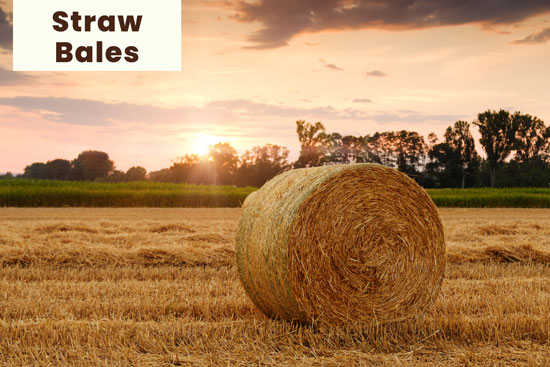
Straw bales can be used to build house walls, instead of concrete. But they need careful design and installation to prevent moisture damage, pest infestations, and structural failure.
Ashcrete
Ashcrete is used as a green building material instead of concrete. It is made up of fly ash. Fly ash is actually a by-product of coal released when coal gets burnt. Fly ash is generally disposed of in landfills or ponds, where it can pollute groundwater and release greenhouse gases. By using fly ash, the traditional components available in concrete can be replaced with fly ash. By using fly ash in concrete, less cement is needed, which reduces concrete’s carbon footprint and energy consumption.
Recycled Plastic
Plastic researchers create recycled Eco-friendly plastic building materials. It’s a good way to use plastic from landfill waste. The process of recycling plastic involves collecting, cleaning, and reprocessing waste plastic products, such as bags, bottles, and packaging, into new products.
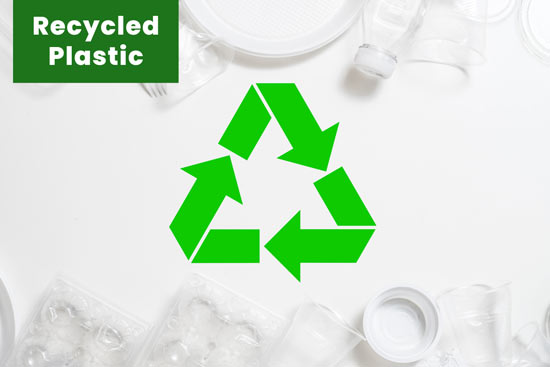
Recycling plastic can be used to manufacture roofing tiles, decking, fencing, pipes, and furniture. This reduces the amount of plastic waste that ends up in landfills or oceans. Recycled plastic is also durable, weather-resistant, and easy to maintain, making it an ideal building material.
Grasscrete
Any construction project can be enhanced by grasscrete’s ecological performance and appearance. Grasscrete is a green building material specially used to create walkways or driveway floors. The grasscrete is built in such a manner that there are open spaces in between.
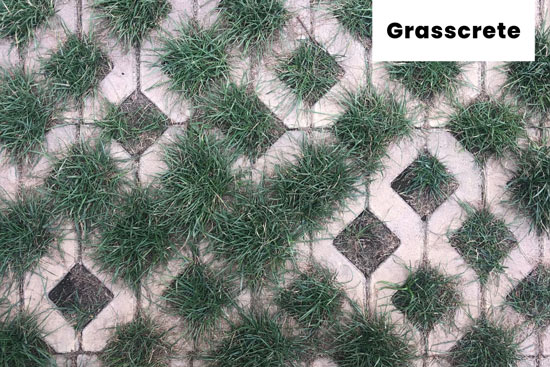
These open spaces allow grass to grow and replace the overall use of concrete to create a floor. These open spaces also help in absorbing the rainwater. Because it requires less watering, fertilizing, and grass cutting than regular lawns, it lowers maintenance costs.
Timbercrete
Timbercrete is actually a mixture of sawdust, concrete, and water, so it is much lighter than traditional concrete. It can be created in different shapes, such as bricks, slabs, etc. The advantages of timbercrete over conventional concrete include a lower carbon footprint, better thermal insulating properties, lighter weight, and easier work-ability. It is an Eco-friendly building material that further reduces transportation emissions and is also an energy-efficient alternative to concrete.
Sandbags
A stack of sand bags can be arranged and stacked to form walls, foundations, or domes. The advantages of sandbags include low costs, easy transportation and installation, durability, fire resistance, and versatile application.
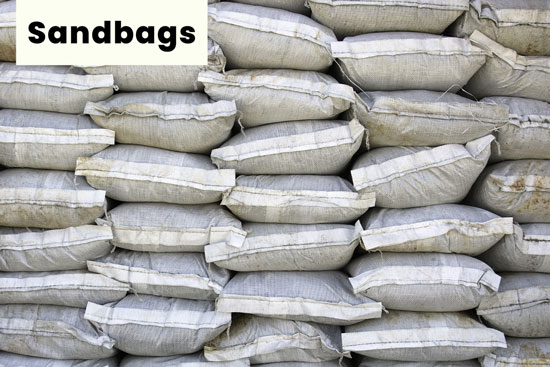
The usual sandbags are made of burlap. Since it decomposes quite easily, polypropylene bags have been used by the people to make construction sandbags.
Wood
You must have seen a cottage made of wood; it looks so beautiful and stylish. Moreover, wood requires very few energy-intensive techniques to transform it into construction products. But it’s prone to fire, rot, insects, and fungi, so it needs special treatment and protection.
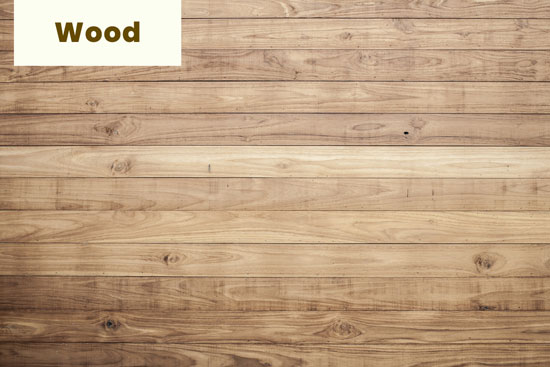
As we all know, trees are very important for the environment; hence, the wood for construction should be used in such a way that it does not affect the biodiversity of the planet. To create innovative and sustainable designs, wood can be combined with metal, glass, or stone. Non-certified and illegal sources can lead to deforestation and habitat loss.
Slate Roofing
Slate is found in rock form and is one of the most environmentally friendly building materials. It is a highly durable material.
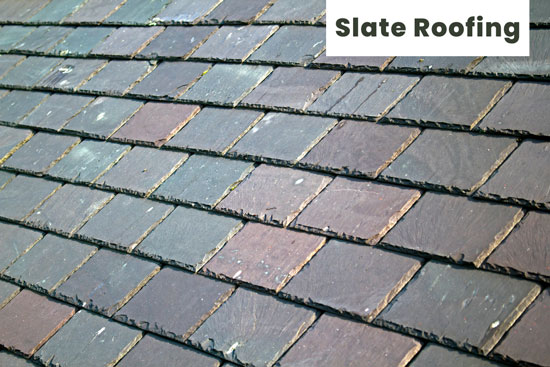
For roofing, slate is used for tiles. Slate is fire-resistant, durable, and recyclable. A slate roof can add traditional aesthetic and beautiful value to a building. The downside of slate roofing is that it’s expensive, heavy, and requires expert installation.
Steel
Steel is an Eco-friendly building material with qualities such as strong, durable, and sustainable. The material is 100% recyclable, requires less energy to make, and reduces construction waste.
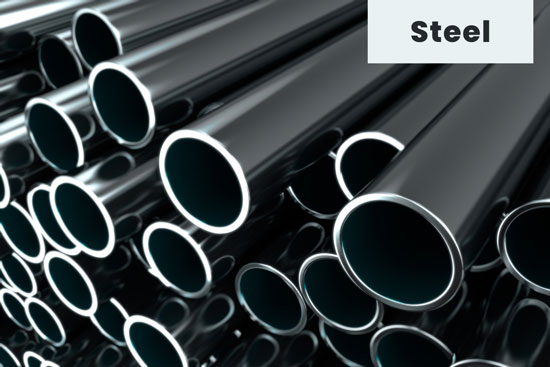
Structures made of steel last longer, need fewer repairs, and have a lower carbon footprint. Steel used in construction must come from sustainable sources to prevent deforestation and other environmental problems.
Thatch
Thatch is one of the oldest and most Eco-friendly building materials used in construction. It is primarily used in villages for the construction of roofs. A thatch roof is made from dried plant materials like straw, reeds, grasses, or palm leaves tied together.
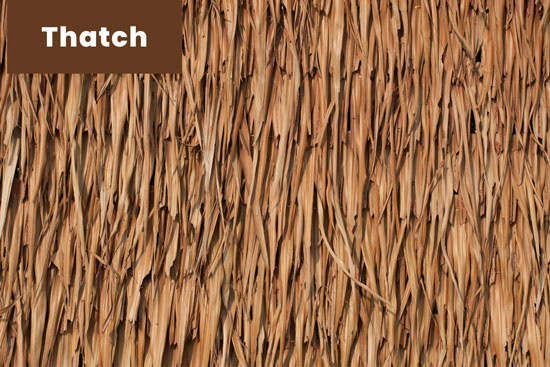
The cost of thatch is quite reasonable, and it’s a good insulator as well. The downsides are thatch needs regular maintenance, can rot or get infested with pests, and it isn’t always suitable for places with high humidity or strong winds.
Composites
Materials that are composites are made from two or more different substances. Composite is a green building material named after its formation. Composite is a much lighter material and acts as an insulator, which also helps save energy. For example, composites can reduce greenhouse gas emissions and save energy by replacing concrete or even steel. Some kinds of Eco-friendly composites are: Bamboo Fiber Reinforced Polymer (BFRP), Wood plastic composite (WPC), Hempcrete, etc.
Natural Fiber
Using natural fibers for green building is Eco-friendly. Natural fibers such as cotton, wool, jute, sisal, coir, etc., are considered as Environmental friendly insulation materials. Natural fibers are commonly used in the construction industry for purposes such as insulation, roofing, flooring, wall panels, furniture, and many other applications. It’s renewable and biodegradable, which reduces construction waste’s environmental impact. It’s durable so it can enhance the overall building longevity and safety.
Non-VOC Paints
You can use environmentally friendly non-VOC paints. It is more Eco-friendly and safer for human health and the environment to use non-VOC paints since they have low or no VOC content. VOC (Volatile Organic Compound) paints form Ozone when it comes in contact with direct sunlight, which is quite harmful to your health. A few examples of non-VOC or low-VOC paints are water-based paints, natural paints, mineral paints, and plant-based paints.
Cellulose
One of the most abundant organic materials on earth is cellulose, a natural polymer found in plant cell walls. As a green building material, cellulose insulation contains recycled paper and is Eco-friendly.
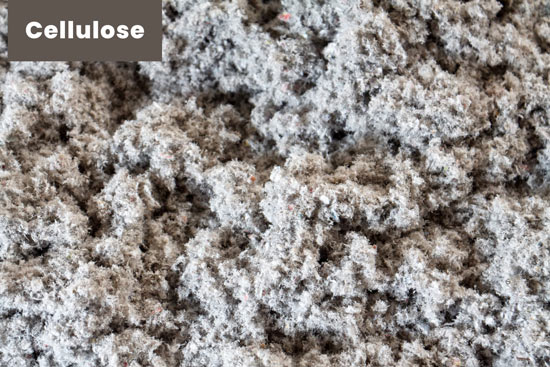
It is available at a reasonable cost in the market and acts as a good insulator. It helps reduce carbon footprints of buildings and contributes to sustainable construction.
Hempcrete
Hempcrete is formed from hemp plant inner fibers. It is very similar to traditional concrete. Lime is used to bind the woody fibers of the hemp plant together to make it a concrete-like solid material. It is a renewable resource and light in weight. Hempcrete has good thermal and acoustic insulation properties, plus it regulates humidity and air quality. You can use hempcrete for walls, floors, roofs, and many more.
Cork
Cork acts as the most effective insulator that helps to save electrical energy, especially in the winter season. Any construction project can benefit from cork’s versatility and Eco-friendliness.

Green building projects can use cork as an insulation material, flooring, or wall covering. It is biodegradable and recyclable, and can be easily disposed of or reused.
Ferrock
Ferrock is new research on the Eco-friendly materials list. It was invented by David Stone. It is made of recycled material such as steel dust to make a building material much stronger than concrete. In addition, Ferrock absorbs carbon dioxide, which makes it less CO2-intensive as compared to traditional concrete. It can be used for foundations, walls, floors, and pavements.
Natural Clay
Natural clay is made up of minerals like silica, alumina, and water. For sustainable and energy-efficient construction projects, it’s a great choice because it’s affordable, readily available, non-toxic, fire-resistant, and excellent at insulating.
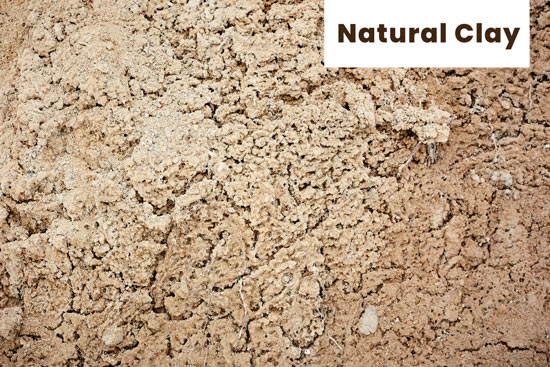
It can be used as an alternative to gypsum-based plasters. Natural clay plasters can give a beautiful look to the interior, but it should be appropriately done by skilled people.
Stone
A stone is a strong, durable, and naturally available building material. Stones can be used to construct exterior walls and flooring for long-lasting protection.
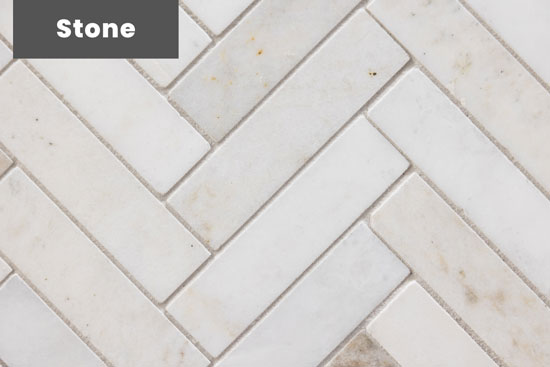
It can also be used in extreme weather conditions. You can get it in granite, marble, limestone, sandstone, and slate. Stone can also be recycled, so it’s Eco-friendly. Traditional and modern buildings both use it.
Is Glass an Eco-Friendly Material?
The glass Eco-friendliness depends on a lot of factors, like its production process, transportation, use, and disposal. It’s made from renewable and non-toxic natural resources like sand, soda ash, and limestone. Glass is also 100% recyclable and can be recycled indefinitely without losing quality or purity. Also, recycling glass helps reduce carbon emissions since it uses less energy than making new glass.
Conclusion
The use of Eco-friendly green building materials can significantly reduce carbon emissions, conserve natural resources, and improve indoor air quality. The list of such materials is extensive, including recycled plastic, bamboo, natural fibers, straw bales, etc. Buildings made from these materials can benefit the environment and human health. But, to further reduce the environmental impact of construction projects, you have to remember that using Eco-friendly materials alone isn’t enough, and you also have to use energy-efficient design and construction methods.
We need to save the environment by using these materials in our life. If you have used these environmentally friendly materials in your life, comment down below and share this article with friends. Let’s save the environment together.